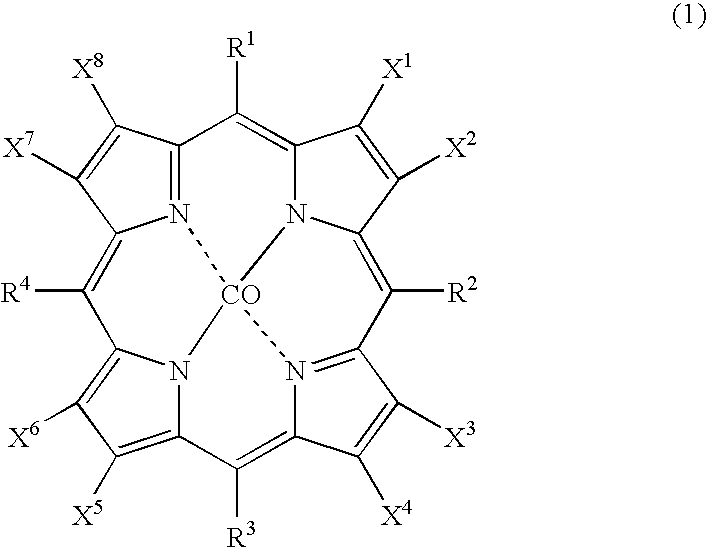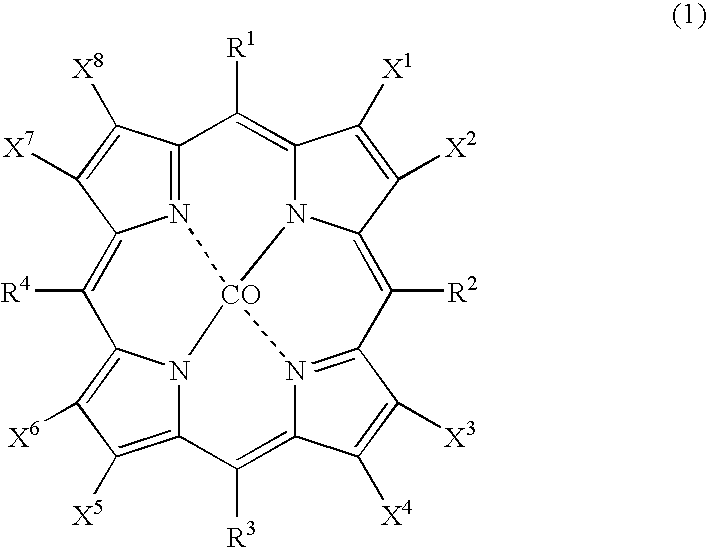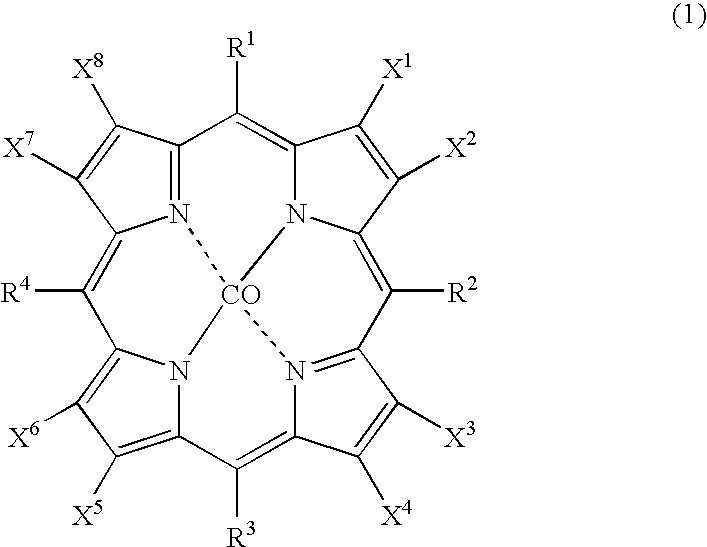Process for producing cycloalkanol and/or cycloalkanone
a technology of cycloalkanol and cycloalkanone, which is applied in the field of process for producing cycloalkanol and/or cycloalkanone, can solve the problems of insufficient selectivity of a product, for example the selectivity of cycloalkanol and/or cycloalkanone produced by oxidizing cycloalkane with molecular oxygen, and achieve good selectivity
- Summary
- Abstract
- Description
- Claims
- Application Information
AI Technical Summary
Benefits of technology
Problems solved by technology
Method used
Image
Examples
example 1
[0028] As catalysts, 0.0007 g (2.1×10−6 mol) of cobalt(II) 2-ethylhexanoate and 0.0035 g (2.1×10−6 mol) of cobalt(II) 5,10,15,20-tetrakis(pentafluorophenyl)-2,3,7,8,12,13,17,18-octabromoporphyrin (compound of the formula (1), wherein X1 to X8 are bromine atoms and R1 to R4 are pentafluorophenyl groups) were dissolved in 2499.6 g (29.7 mol) of cyclohexane to prepare feed liquid (catalyst / starting material solution). Into 1 L autoclave, 278 g of the feed liquid was introduced, and inside of the system was pressured to 0.6 MPa with nitrogen, and then, the temperature of the system was increased to 145° C. with flowing nitrogen. Continuous reaction was conducted for 4 hours with supplying the feed liquid at 4.6 g / min. with flowing air so as to make oxygen concentration in an exhaust gas 1 to 5% by volume under conditions of reaction temperature 145° C., reaction pressure 0.6 MPa, and residence time 60 minutes. From a result of analysis of the reaction mixture, a conversion of cyclohexan...
example 2
[0029] A procedure was conducted similarly as in Example 1, except that residence time was 75 minutes. A conversion of cyclohexane was 5.7%, and selectivities of cyclohexanone, cyclohexanol and cyclohexyl hydroperoxide were 31.4%, 34.4% and 19.2%, respectively (total selectivity was 85.0%).
PUM
| Property | Measurement | Unit |
|---|---|---|
| Selectivity | aaaaa | aaaaa |
Abstract
Description
Claims
Application Information
 Login to View More
Login to View More - R&D
- Intellectual Property
- Life Sciences
- Materials
- Tech Scout
- Unparalleled Data Quality
- Higher Quality Content
- 60% Fewer Hallucinations
Browse by: Latest US Patents, China's latest patents, Technical Efficacy Thesaurus, Application Domain, Technology Topic, Popular Technical Reports.
© 2025 PatSnap. All rights reserved.Legal|Privacy policy|Modern Slavery Act Transparency Statement|Sitemap|About US| Contact US: help@patsnap.com



